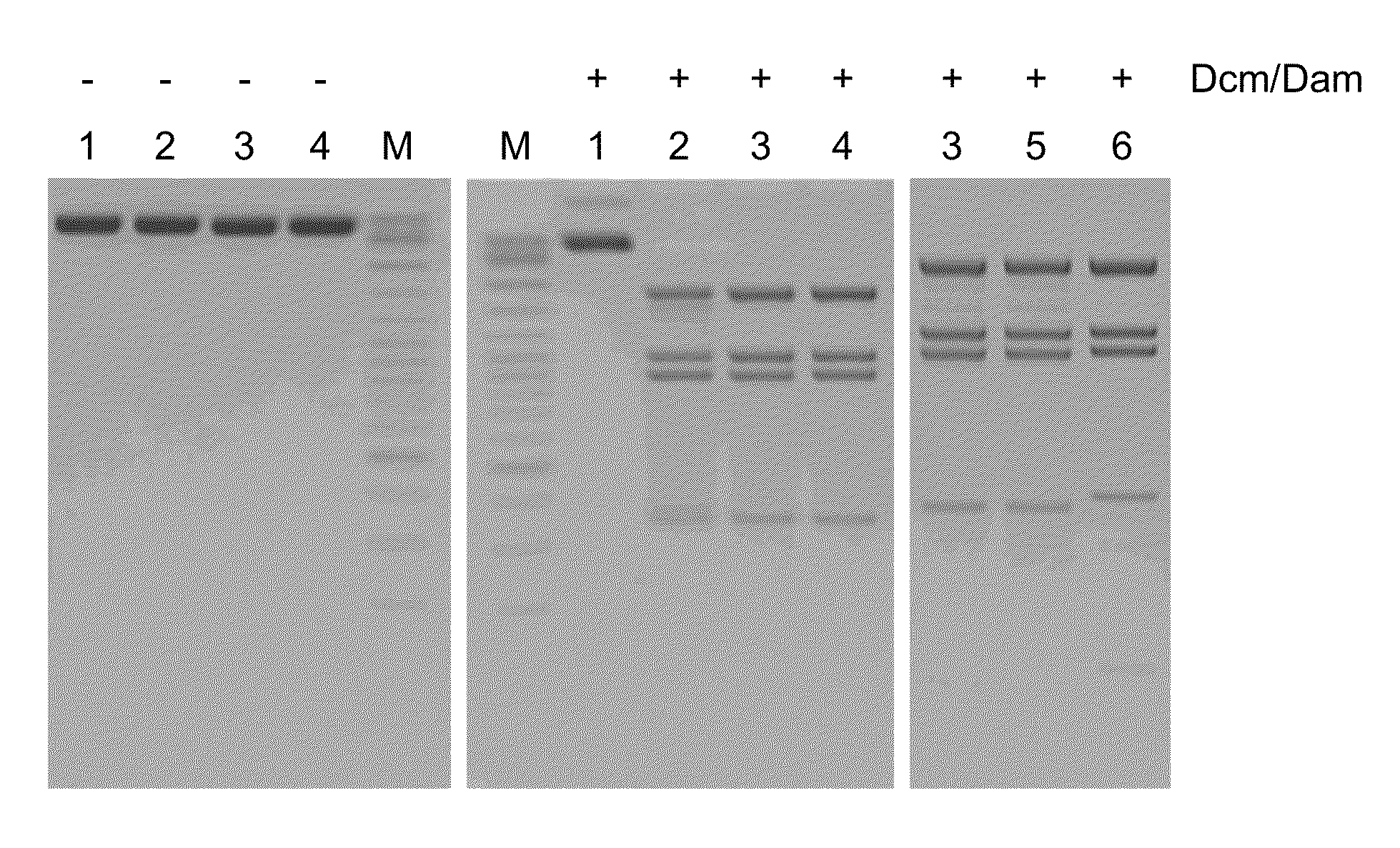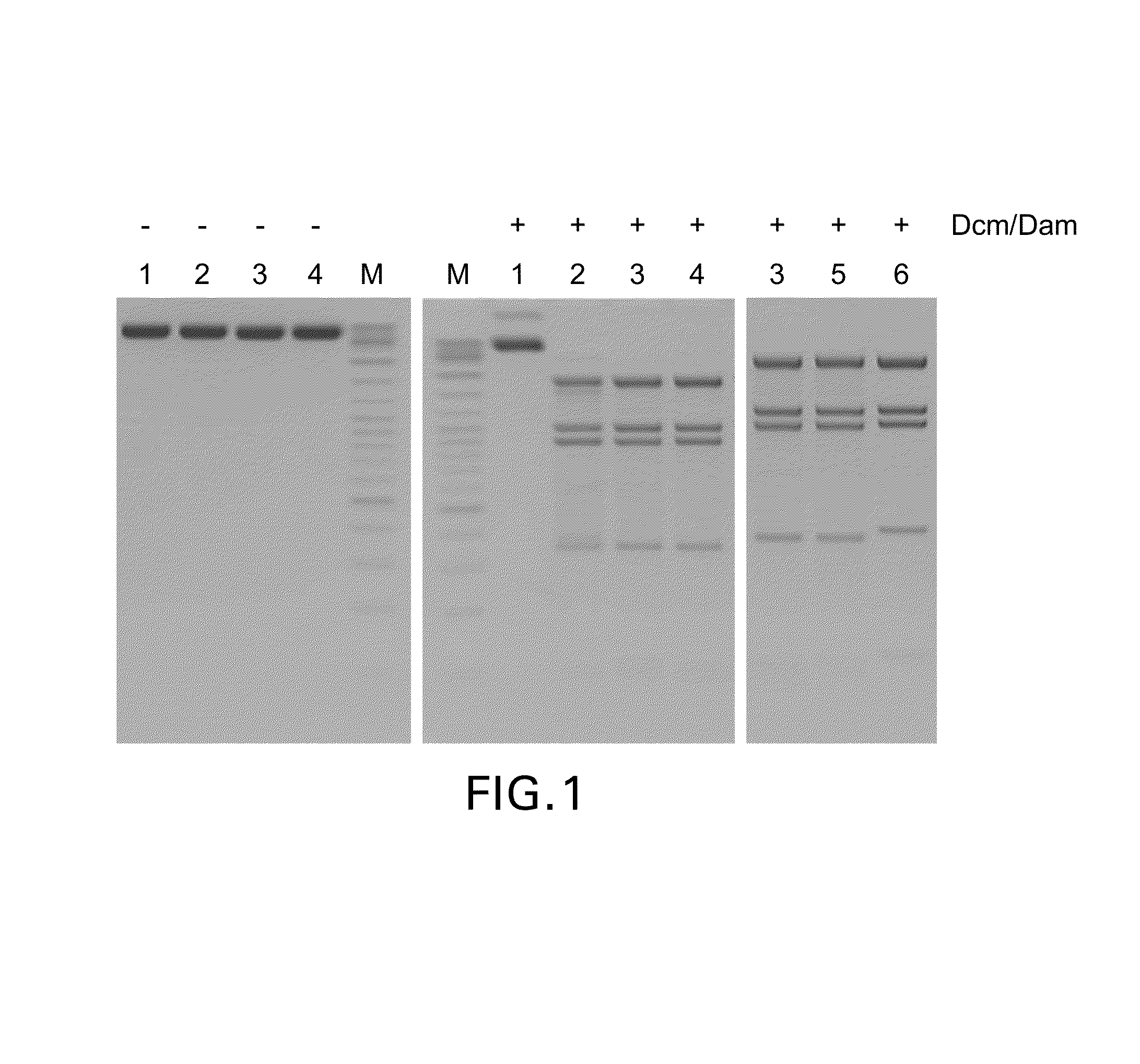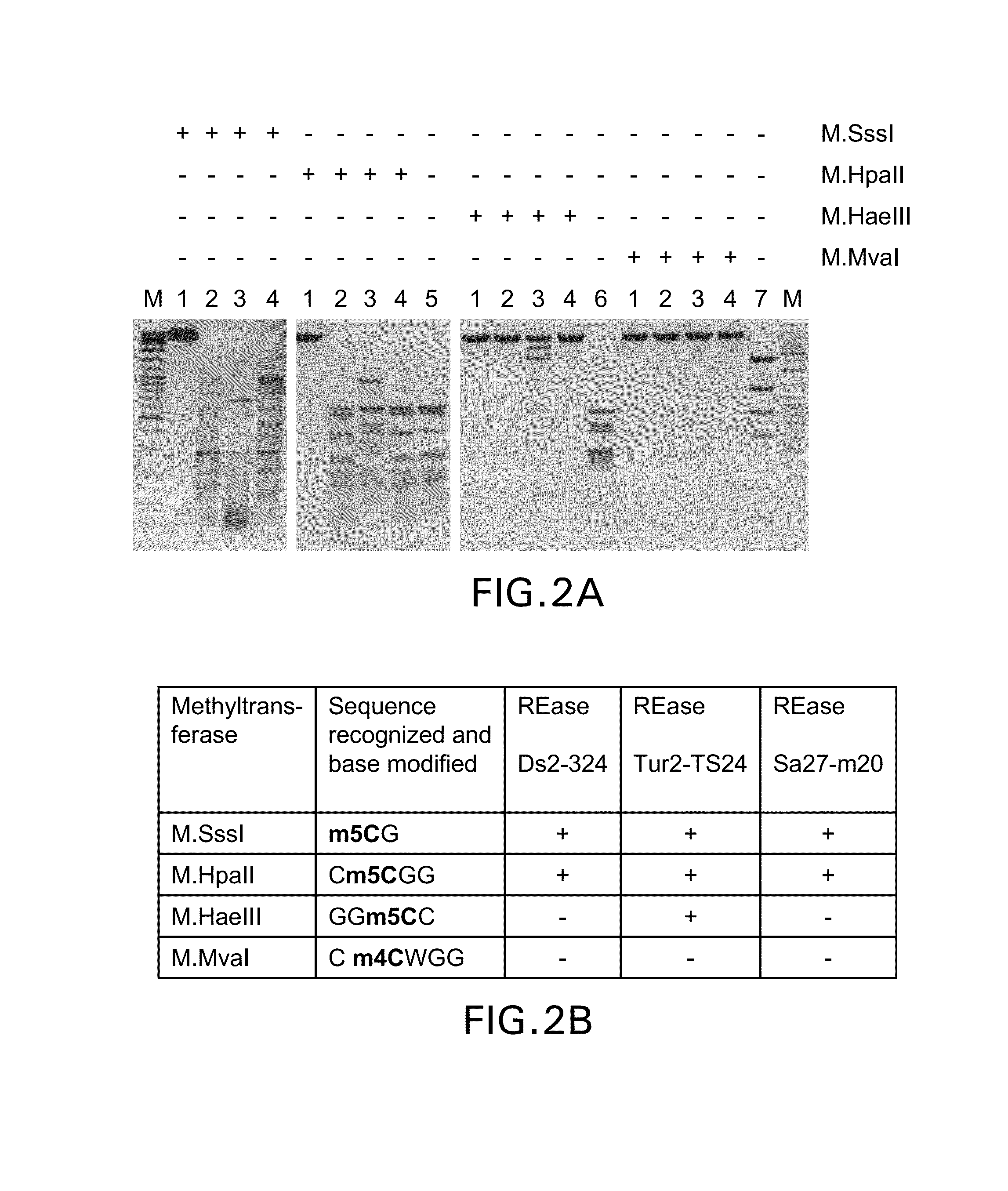Restriction endonucleases and their applications
a restriction endonuclease and endonuclease technology, applied in hydrolases, enzymes, biochemical apparatus and processes, etc., can solve the problems of reducing the efficiency of mutagenesis, dpni cleavage is not easy to cleave hemi-methylated gatc targets, and the dpni to cleave gatc targets is contradictory, so as to achieve easy characterisation
- Summary
- Abstract
- Description
- Claims
- Application Information
AI Technical Summary
Benefits of technology
Problems solved by technology
Method used
Image
Examples
experimental outline
Identification of Methylation-Specific Restriction Endonucleases and their Partial Purification
[0073]Screening of bacterial strains isolated from various environmental samples for those, which produce methylation-specific restriction endonucleases was carried out by incubating crude extracts of strains under investigation with modified (dam+ dcm+) and not modified (dam− dcm−) DNA of phage λ as a substrate in parallel at 37° C. and varying both the amount of crude extract added and the reaction incubation time. After analysis of reaction products by agarose gel electrophoresis at least three bacterial strains, Ds2-324, Tur2-TS24 and Sa27-m20, were identified which digested the modified DNA substrate but not the non-modified one. The activity of methylation-specific restriction endonucleases in crude extracts was hardly detectable (only traces of DNA cleavage were observed after the overnight incubation) and too low for specificity studies; therefore all three enzymes were partially p...
example 1
Cleavage of Hemi-Methylated and Completely Methylated DNA Substrates in Presence of Non Modified DNA Substrates
[0120]To determine how well the discovered methylation-specific restriction enzymes would perform in site-specific cleavage of methylated DNA molecules when they are alongside with not modified DNA molecules, the model experiment shown in FIG. 10 was performed. The two plasmids used, pUC57 and pUC57mut, are identical except one point mutation (CCA.AGC.TTG was changed to CCA.AGC.TAG) within the multiple cloning site of pUC57mut which disrupted the target of HindIII restriction endonuclease (see above, underlined) and introduced a translation termination codon (see above, bolded) into the 5′-terminal part of the lacZ gene which codes for the N-terminal fragment of beta-galactosidase. This fragment, whose synthesis can be induced by inducer of lac operon isopropyl beta-D-thiogalactopyranoside (IPTG), is capable of intra-allelic (or alfa) complementation with a defective form o...
example 2
Analysis of Global DNA Methylation Levels Using Methylation-Specific Restriction Endonucleases
[0128]The detailed scheme of this application is shown in FIG. 11.
PUM
| Property | Measurement | Unit |
|---|---|---|
| pH | aaaaa | aaaaa |
| pH | aaaaa | aaaaa |
| concentration | aaaaa | aaaaa |
Abstract
Description
Claims
Application Information
 Login to View More
Login to View More - R&D
- Intellectual Property
- Life Sciences
- Materials
- Tech Scout
- Unparalleled Data Quality
- Higher Quality Content
- 60% Fewer Hallucinations
Browse by: Latest US Patents, China's latest patents, Technical Efficacy Thesaurus, Application Domain, Technology Topic, Popular Technical Reports.
© 2025 PatSnap. All rights reserved.Legal|Privacy policy|Modern Slavery Act Transparency Statement|Sitemap|About US| Contact US: help@patsnap.com



